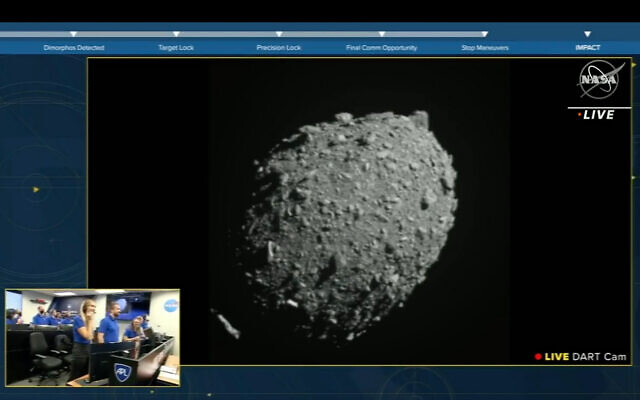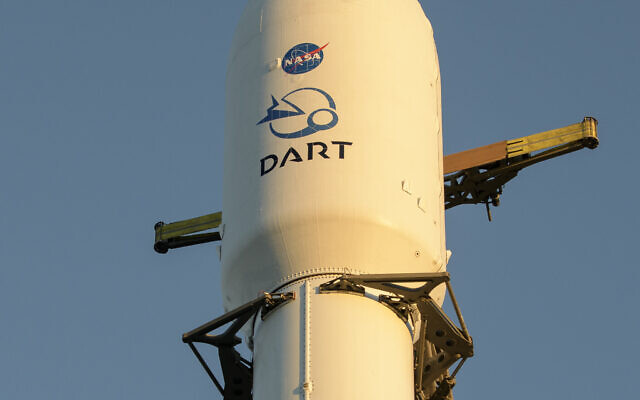Space agency aims to alter orbit of rock by smashing spacecraft, known as DART, into its surface, in venture hitherto only attempted in science fiction

LAUREL, United States (AFP) — NASA on Monday accomplished a feat humanity never before attempted: deliberately smacking a spacecraft into an asteroid to slightly deflect its orbit, in a key test of our ability to stop cosmic objects from devastating life on Earth.
The Double Asteroid Redirection Test (DART) spaceship launched from California last November and hits its target at roughly 14,000 miles (22,500 kilometers) per hour.
“It’s the final cosmic collision countdown,” tweeted mission control at Johns Hopkins Applied Physics Laboratory in Maryland ahead of the impact.
To be sure, neither the asteroid moonlet Dimorphos nor the big brother it orbits, called Didymos, pose any threat as the pair loop the Sun, passing about seven million miles from Earth at nearest approach.
But NASA has deemed the experiment important to carry out before an actual need is discovered.
The spacecraft was around the size of a car and the asteroid is 530 feet (160 meters) tall, around the size of two Statues of Liberty.
IMPACT SUCCESS! Watch from #DARTMIssion’s DRACO Camera, as the vending machine-sized spacecraft successfully collides with asteroid Dimorphos, which is the size of a football stadium and poses no threat to Earth. pic.twitter.com/7bXipPkjWD
— NASA (@NASA) September 26, 2022
By striking Dimorphos head-on, NASA hopes to push it into a smaller orbit, shaving ten minutes off the time it takes to encircle Didymos, which is currently 11 hours and 55 minutes — a change that will be detected by ground telescopes in the days or weeks to come.
The proof-of-concept experiment will make a reality of what has before only been attempted in science fiction — notably in films such as “Armageddon” and “Don’t Look Up.”
Technically challenging
As the craft propeled itself through space, flying autonomously for the mission’s final phase, its camera system beamed down the very first pictures of Dimorphos.
A toaster-sized satellite called LICIACube, which already separated from DART a few weeks ago, will make a close pass of the site to capture images of the collision and the ejecta — the pulverized rock thrown off by impact.
LICIACube’s pictures will be sent back in the next weeks and months.
Also watching the event: an array of telescopes, both on Earth and in space — including the recently operational James Webb — which might have been able to see a brightening cloud of dust.
Finally, a full picture of what the system looks like will be revealed when a European Space Agency mission four years down the line called Hera arrives to survey Dimorphos’ surface and measure its mass, which scientists can currently only guess at.
Being prepared
Very few of the billions of asteroids and comets in our solar system are considered potentially hazardous to our planet, and none are expected in the next hundred years or so.

But “I guarantee to you that if you wait long enough, there will be an object,” said NASA’s Thomas Zurbuchen.
We know that from the geological record — for example, the six-mile wide Chicxulub asteroid struck Earth 66 million years ago, plunging the world into a long winter that led to the mass extinction of the dinosaurs along with 75 percent of all species.
An asteroid the size of Dimorphos, by contrast, would only cause a regional impact, such as devastating a city, albeit with greater force than any nuclear bomb in history.
How much momentum DART imparted on Dimorphos will depend on whether the asteroid is solid rock, or more like a “rubbish pile” of boulders bound by mutual gravity — a situation that’s not yet known.
The mission marked the first step toward a world capable of defending itself from a future existential threat.
As reported by The Times of Israel
